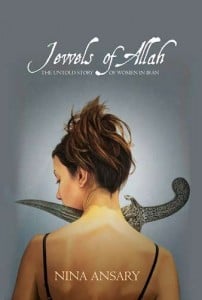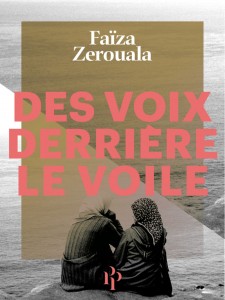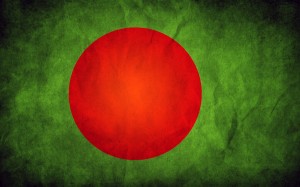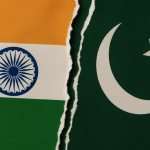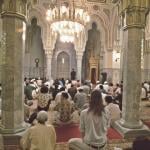Miral, a novel written by Rula Jebreal and made into a film by American filmmaker Julian Schnabel, is the story of a young girl’s coming of age–physically, emotionally and politically–in a Jerusalem of the 1980s, which finds itself smothered with student demonstrations, violent resistance, and unrelenting occupation alongside everyday uncharted life.
 After the tragic death of their mother, Miral and her younger sister, Rania, are put in Hind Husseini’s school for young girls. The girls visit their father, an imam at al-Aqsa, as well as spend their summers with him. The school becomes a second home for the young girls as they find themselves trying to deal with the seemingly worsening political situation in the Occupied Territories and also with life’s daily hurdles and occasional struggles.
After the tragic death of their mother, Miral and her younger sister, Rania, are put in Hind Husseini’s school for young girls. The girls visit their father, an imam at al-Aqsa, as well as spend their summers with him. The school becomes a second home for the young girls as they find themselves trying to deal with the seemingly worsening political situation in the Occupied Territories and also with life’s daily hurdles and occasional struggles.
Miral becomes increasingly involved with the political resistance, particularly the Popular Front for the Liberation of Palestine, much to the dismay and worry of her family and her school. Her impulsive nature, immature experience and resounding passion for her people put herself, her family, and the her fellow students in constant danger. Ultimately, Miral is forced to make a decision having to choose between joining the resistance movement and continuing her education. She pursues studies to use her mind and ability as forms of resistance– to be, as Husseini says to Miral, “future women leaders of Palestine, not martyrs.”
Despite some memorable characters and moments, as well as the (ultimately brief) acknowledgment of Hind Husseini’s work and life, the books fails to be anything more than, as the Omar El-Khairy notes in a review of the film, “Palestine as Hollywood fantasy.” While the film is markedly different from the novel in many ways, El-Khairy’s critiques remain as relevant as for the book as they do for the movie. The book is written to be a film seemingly more about sexually adventurous, politically aggressive and unorthodox Palestinian Muslim women who stand against the almost invariably abusive, rigidly-traditional minded men who try to exert certain sort control over the various women in the novel, as opposed to a novel about the Palestinian experience, during the volatile period of the Intifada, especially for young women.
The novel is filled with weak and forced metaphors, poor writing and a severe lack of flow in narration, lucidly highlighting the author’s personal political beliefs and agenda, deeply drenched in an exoticized Western perception of Arab women. There is belly dancing, there is a lot of guilt-ridden sex, and there is the use of the words “exotic Middle Eastern features.”
There is also no organization and no sense of time as well. The book begins in 1948 Palestine, jumping back and forth between the beginning of the Oslo period and the Nakba, finally settling into the ‘80s, during which most of Miral’s life and story develops. Yet while the stories of different women “strangely” connected by fate and challenges they’ve faced in their lives (coming mostly from men) relate heavily to Miral, they ultimately play very little relevance in the development of the plot and Miral’s character. In fact, many characters fall flat in their development, primarily due to Jebreal’s ‘on-the-nose’ and rushed style of writing, which leaves very little to the reader’s imagination. Intimate moments and otherwise momentous self-awareness occasions are reduced to obvious statements made by Jebreal. For instance, in the scene where Miral and Rania spend their first few nights in the new school, all the other girls – orphans, abandoned in one form or another – push their beds together and hold onto one another tightly, at night, just before falling asleep.
This particular scene is described warmly by Jebreal and set up for the readers in the previous chapters, which described the backgrounds of the school, its founders and the various girls staying there. The instance of intimacy shared between these girls beautifully and wrenchingly highlights the loss and feelings of loneliness as a result of their collective and individual abandonment, most apparent at night in those moments before falling asleep.
Yet rather than allowing the reader to discern his/her own meaning from this intimate moment, as predicated by the author previously, Jerbreal ends the scene by letting the audience know that “[s]uch gestures of affection were means of compensating for the lack of physical contact with their mothers” and thus in effect kind of ruining that sweet moment of intimacy.
Finally, there is the overall portrayal of women, sex and general gender in the novel. There is nothing more evident of the audience to whom Jebreal is writing than when she is discussing the various, dispersed female characters, both those who are seemingly integral to the story and those who are in passing. They are all sexually “expressive” women, breaking the shackles of tradition, feeling little to no guilt, reclaiming their womanhood from men who’ve tried their hardest to exert some sort of abusive or ideological control on their lives. As El-Kheiry notes in his review, “[a]part from the benign figure of Jamal, Palestinian men spend their time raping, drooling over or marrying off their daughters.” And women are either weak and subservient or defying tradition, asserting their independence and strength by never getting married and becoming in some sense, “masculated” themselves. There’s even an instant of lesbian sexual experiment as well as young girls demanding Middle Eastern-looking Barbies, in contrast to the blonde-haired blue-eyed voluptuous devils to which the rest of us are accustomed.
Hind Husseini, based off of a real woman by the same name, was perhaps the most intriguing character in the novel, given her very real existence and integral place in Palestinian history, particularly immediately following the Nakba. Had the story circulated around her, as opposed to taking several detours and tangents before deciding to focus on Miral, there could have been great potential for this novel to have a place in a long list of books about the varying Palestinian experience.
Instead, poor writing and blunt ideological rants expressed through various characters render this book as only a vehicle for the big screen, with an ending to match. My suggestion? Read Gate of the Sun or The Yacoubian Building. It will have been time much better spent.


